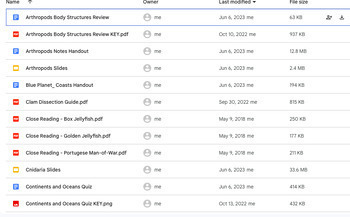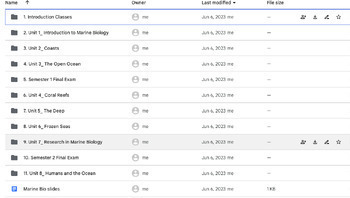Marine Biology Full Year Curriculum- Unit Plans and Daily Lesson Plans
- Google Docs™

What educators are saying
Description
This curriculum for high school Marine Biology includes everything you need: a syllabus, unit plans, lesson plans for every day of the school year (including objectives, standards, and materials). All digital materials needed for those lessons, including answer keys, assessments, and labs are provided! The curriculum is organized and in a very easy-to-follow manner, and aligns with NGSS standards.
Lessons are designed for an A day (85 min)/B day (85 min)/all classes (45 min) rotation, but can easily be adjusted to fit your schedule.
Due to using many resources from online sources, I am just selling the unit and lesson plans here. But when you buy them, please email me (ashleyf077@gmail.com) with a picture of your receipt and I will share with you my whole Google Drive of all the resources!





